Lenovo IdeaPad 5 Pro (16″, 2022) review
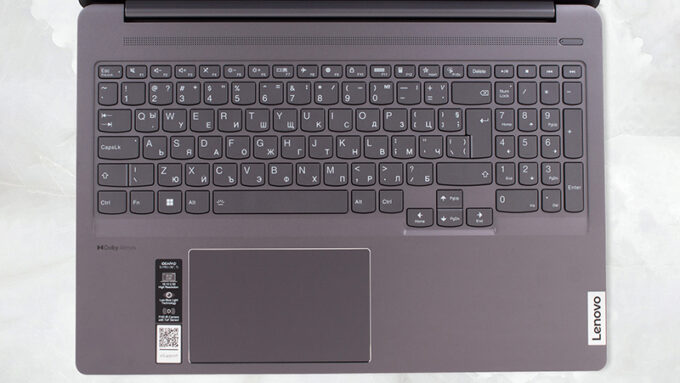 Buying a “Pro” device sets some really high expectations. One starts to think that their laptop is suitable for tasks that are way beyond its “field of expertise”. The IdeaPad 5 Pro is one such notebook. Although it is pretty powerful, you should keep in mind that it is created to satisfy a very specific group of people – content creators, which are just entering this field.
Buying a “Pro” device sets some really high expectations. One starts to think that their laptop is suitable for tasks that are way beyond its “field of expertise”. The IdeaPad 5 Pro is one such notebook. Although it is pretty powerful, you should keep in mind that it is created to satisfy a very specific group of people – content creators, which are just entering this field.
Interestingly, Lenovo has chosen a very appropriate set of processors for this device. When it comes to the AMD version – like the one we have with us today, you are treated to the Ryzen 5 6600HS, and the Ryzen 7 6800HS. Both of them are dubbed “Creator Edition” CPUs. Ultimately, they sport a lower base TDP, compared to the non-S models – 35W vs 45W.
This is a very smart move from Team Red but it is not entirely new. In fact, it did the same thing last year, with the only difference being the lack of “Creator Edition” in the processor’s name. Nevertheless, it serves the same purpose of bringing high levels of performance but is significantly easier to cool down.
Another very important aspect of this creator-oriented device is the 16:10 2.5K IPS display. You can pick it with a 120Hz refresh rate, with, or without G-Sync. In addition, there is a 60Hz option of the same resolution, should you want to tighten your budget.
You can check the prices and configurations in our Specs System: https://laptopmedia.com/series/lenovo-ideapad-5-pro-16-2022/
Contents
- Specs Sheet
- What’s in the box?
- Design and construction
- Disassembly, upgrade options, and maintenance
- Display quality
- Health impact – PWM / Blue Light
- Buy our profiles
- Sound
- Drivers
- Battery
- CPU options
- GPU options
- Gaming tests
- [eBook Guide + Tools] How to MAX OUT your Lenovo IdeaPad 5 Pro (16″, 2022)
- Temperatures and comfort
- Verdict
Specs Sheet
- HDD/SSD
- up to 2000GB SSD
- M.2 Slot
- 1x 2280 PCIe NVMe 3.0 x4 See photo
- RAM
- up to 16GB
- OS
- Windows 11 Home, No OS, Windows 11 Pro
- Battery
- 75Wh, 75Wh
- Body material
- Aluminum
- Dimensions
- 356 x 251 x 16.9 mm (14.02" x 9.88" x 0.67")
- Weight
- 1.92 kg (4.2 lbs)
- Ports and connectivity
- 1x USB Type-A
- 3.2 Gen 1 (5 Gbps)
- 1x USB Type-A
- 3.2 Gen 1 (5 Gbps), Sleep and Charge
- 1x USB Type-C
- 3.2 Gen 2 (10 Gbps), Power Delivery (PD), DisplayPort
- HDMI
- 2.0
- Card reader
- SD, SDHC, SDXC, MMC
- Ethernet LAN
- Wi-Fi
- 802.11ax
- Bluetooth
- 5.2
- Audio jack
- 3.5mm Combo Jack
- Features
- Fingerprint reader
- Web camera
- FHD with IR, Fixed Focus
- Backlit keyboard
- Microphone
- Dual Array Microphone with Noise Cancellation, Support for Lenovo Voice Assistant/ Amazon Alexa
- Speakers
- 2x 2W Stereo Speakers, Dolby Atmos
- Optical drive
- Security Lock slot
All Lenovo IdeaPad 5 Pro (16″, 2022) configurations
What’s in the box?
The packaging of this product is pretty standard, to be frank. It only has some paperwork, as well as a 135W power adapter.
Design and construction
To be completely honest, this laptop’s design hasn’t changed a whole lot since last year. What is good, however, is that it didn’t really need to. This device is made entirely out of metal, which makes it pretty cool to the touch.
In addition to that, it is pretty sturdy – especially the base. This doesn’t mean that the lid is too bendy, but it is considerably less rigid than the base. Nevertheless, we are happy with the execution, and you will definitely feel the premium vibe.
We are also satisfied with the fact that the lid can be opened with a single hand. It sports a notch, which makes it slightly easier to grab onto it. Furthermore, it houses a Full HD Web camera with an IR face recognition sensor. However, the lack of a privacy shutter means you will need to use the good old tape method to hide from the government.
On the other hand, we have to mention that the bezels around the display are really slim. Thanks to that, the 16-inch screen doesn’t make the laptop appear larger but instead keeps the 15-inch form factor. Moving to the keyboard, we see a unit with a backlight and a NumberPad. As you can tell, the Arrow keys are pretty big too, which is a big win for some people. While the feedback here is clicky, the key travel is a bit shorter than we would like it to be.
Respectively, the touchpad is fantastic. It has a Mylar surface, which is really similar to the feel provided by glass. Also, it has a size of 75 by 120mm, which is on the big side.
By the way, you may have noticed a grill above the keyboard. Well, it does not house any speakers but is instead used for ventilation. If you are wondering where the sound comes from, then, this happens through two cutouts on the bottom panel. Also there, you will find more vents, while the hot air escapes the device through two slits in between the base and the lid.
Ports
On the left side, you will find the charging plug, an HDMI 2.0 connector, followed by a USB Type-C 3.2 (Gen. 2) port with Power Delivery and DisplayPort functionality, as well as an Audio jack. Switch sides, and you will see two USB Type-A 3.2 (Gen. 1) ports, and an SD card reader.
Disassembly, upgrade options, and maintenance
To access this laptop’s internals, you need to undo a total of 9 Torx-head screws. Then, pry the bottom panel with a plastic tool and lift it away from the chassis. So far – nothing unorthodox.
Inside, you will find a 75Wh battery pack. It lasts for nearly 11 hours of Web browsing, or more than 10 hours of video playback. If you want to take it out, unplug the battery connector, and remove the 7 Phillips-head screws that hold it in place.
Unfortunately, the memory is soldered to the motherboard. The maximum supported configuration is 16GB of quad-channel LPDDR5 RAM, working at 6400MHz. As for the storage, there is one PCIe x4 slot. It supports Gen 4 SSDs.
The cooling setup features two heat pipes shared between the processor and the graphics card. Furthermore, you get two fans and a pair of heat spreaders for the VRMs and the graphics memory.
Display quality
Lenovo IdeaPad 5 Pro (16″, 2022) is equipped with a WQXGA IPS panel, model number LEN160WQXGA (LEN9151). It comes with a 60Hz refresh rate. Its diagonal is 16.0″ (40.6 cm), and the resolution – 2560 x 1600p. Additionally, the screen ratio is 16:10, the pixel density – 189 ppi, and their pitch – 0.13 x 0.13 mm. The screen can be considered Retina when viewed from at least 46 cm (from this distance, the average human eye can’t see the individual pixels).
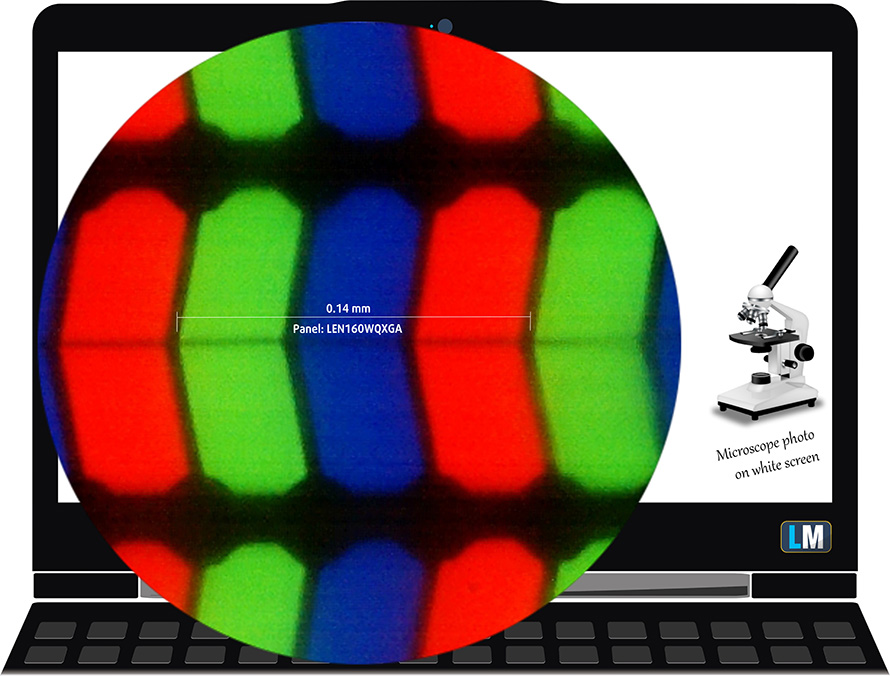
Viewing angles are good. We offer images at different angles to evaluate the quality.

Also, a video with locked focus and exposure.
The maximum measured brightness is 337 nits (cd/m2) in the middle of the screen and 330 nits (cd/m2) average across the surface with a maximum deviation of 7%. The Correlated Color Temperature on a white screen and at maximum brightness is 6620K (average) – slightly colder, almost matching the 6500K optimum for sRGB.
In the illustration below you can see how the display performs from a uniformity perspective. The illustration below shows how matters are for operational brightness levels (approximately 140 nits) – in this particular case at 80% Brightness (White level = 141 cd/m2, Black level = 0.08 cd/m2).
Values of dE2000 over 4.0 should not occur, and this parameter is one of the first you should check if you intend to use the laptop for color-sensitive work (a maximum tolerance of 2.0 ). The contrast ratio is very good – 1680:1.
To make sure we are on the same page, we would like to give you a little introduction to the sRGB color gamut and the Adobe RGB. To start, there’s the CIE 1976 Uniform Chromaticity Diagram that represents the visible specter of colors by the human eye, giving you a better perception of the color gamut coverage and the color accuracy.
Inside the black triangle, you will see the standard color gamut (sRGB) that is being used by millions of people on HDTV and on the web. As for the Adobe RGB, this is used in professional cameras, monitors, etc for printing. Basically, colors inside the black triangle are used by everyone and this is the essential part of the color quality and color accuracy of a mainstream notebook.
Still, we’ve included other color spaces like the famous DCI-P3 standard used by movie studios, as well as the digital UHD Rec.2020 standard. Rec.2020, however, is still a thing of the future and it’s difficult for today’s displays to cover that well. We’ve also included the so-called Michael Pointer gamut, or Pointer’s gamut, which represents the colors that naturally occur around us every day.
The yellow dotted line shows Lenovo IdeaPad 5 Pro (16″, 2022)’s color gamut coverage.
Its display covers 90% of the sRGB/ITU-R BT.709 (web/HDTV standard) in CIE1976.
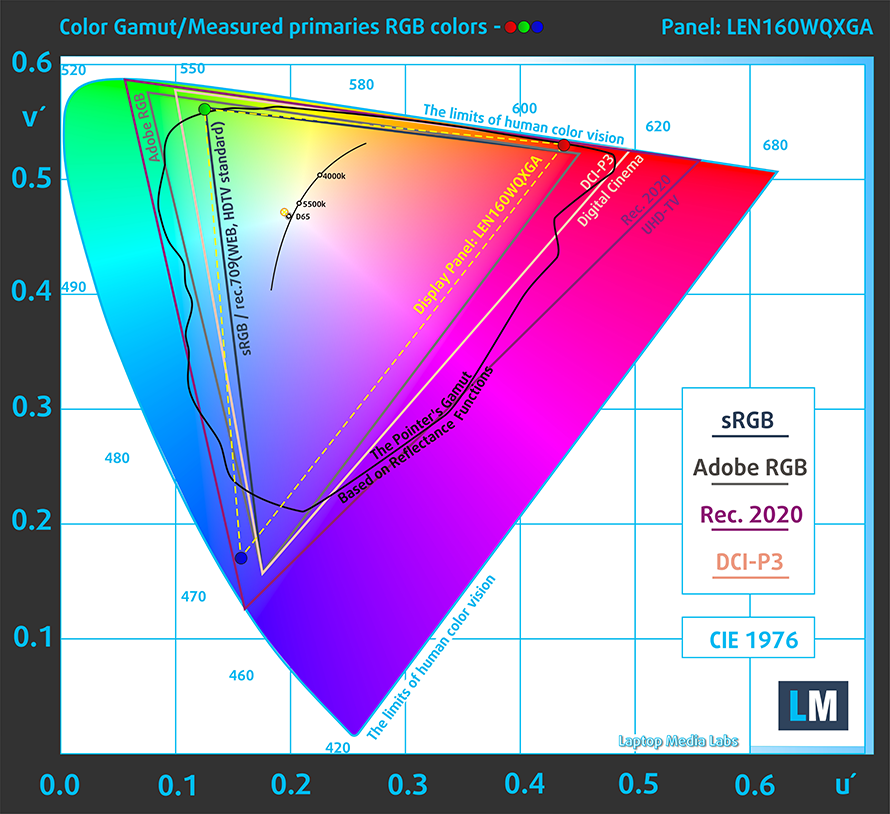
Our “Design and Gaming” profile delivers optimal color temperature (6500K) at 140 cd/m2 luminance and sRGB gamma mode.
We tested the accuracy of the display with 24 commonly used colors like light and dark human skin, blue sky, green grass, orange, etc. You can check out the results in factory condition and also, with the “Design and Gaming” profile.
Below you can compare the scores of Lenovo IdeaPad 5 Pro (16″, 2022) with the default settings (left), and with the “Gaming and Web design” profile (right).
The next figure shows how well the display is able to reproduce really dark parts of an image, which is essential when watching movies or playing games in low ambient light.
The left side of the image represents the display with stock settings, while the right one is with the “Gaming and Web Design” profile activated. On the horizontal axis, you will find the grayscale, and on the vertical axis – the luminance of the display. On the two graphs below you can easily check for yourself how your display handles the darkest nuances but keep in mind that this also depends on the settings of your current display, the calibration, the viewing angle, and the surrounding light conditions.
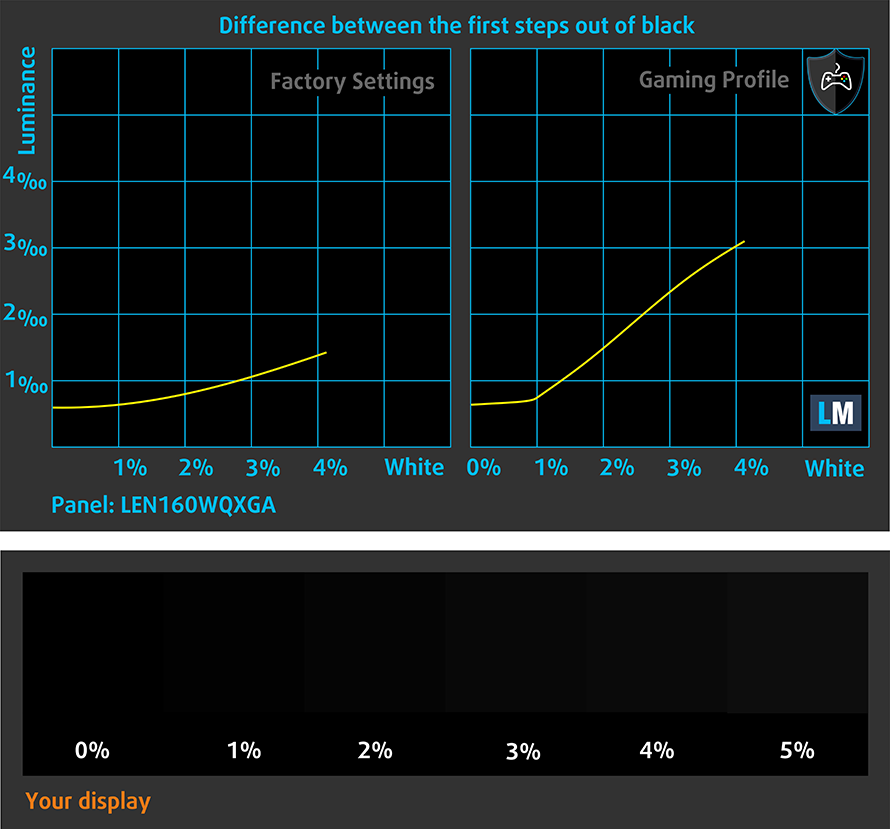
Response time (Gaming capabilities)
We test the reaction time of the pixels with the usual “black-to-white” and “white-to-black” method from 10% to 90% and vice versa.
We recorded Fall Time + Rise Time = 17 ms.
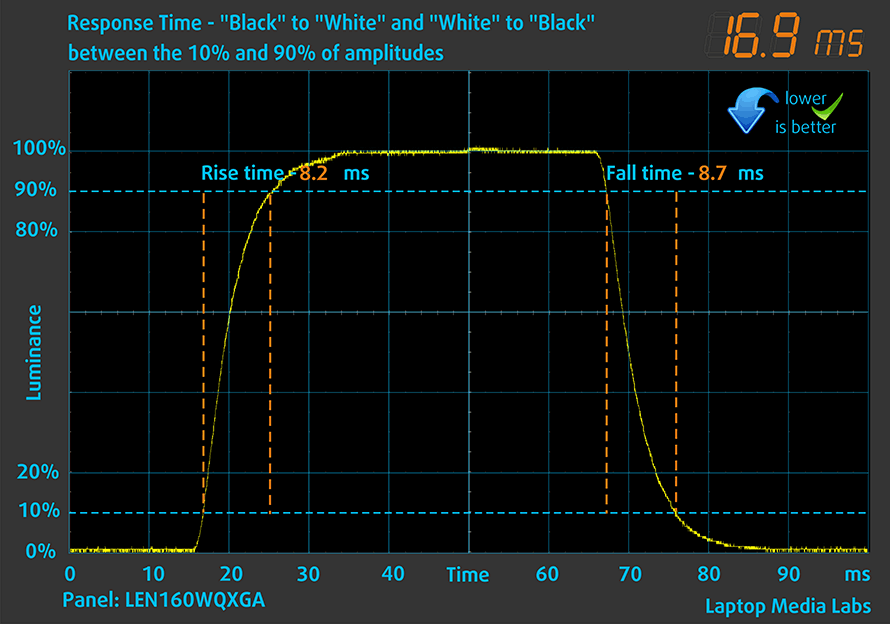
After that, we test the reaction time of the pixels with the usual “Gray-to-Gray” method from 50% White to 80% White and vice versa between 10% and 90% of the amplitude.
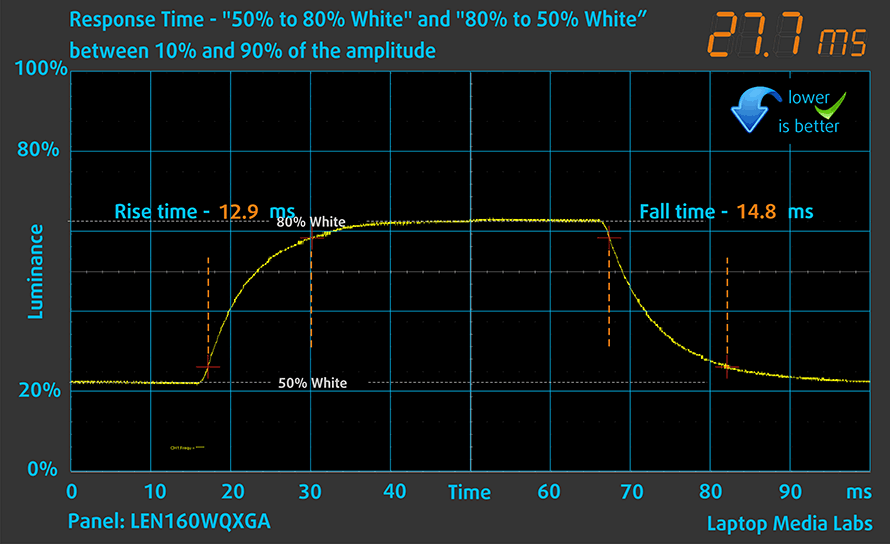
Health impact – PWM / Blue Light
PWM (Screen flickering)
Pulse-width modulation (PWM) is an easy way to control monitor brightness. When you lower the brightness, the light intensity of the backlight is not lowered, but instead turned off and on by the electronics with a frequency indistinguishable to the human eye. In these light impulses, the light/no-light time ratio varies, while brightness remains unchanged, which is harmful to your eyes. You can read more about that in our dedicated article on PWM.
Lenovo IdeaPad 5 Pro (16″, 2022)’s display doesn’t flicker at any brightness level. This makes the screen comfortable for long periods of use.
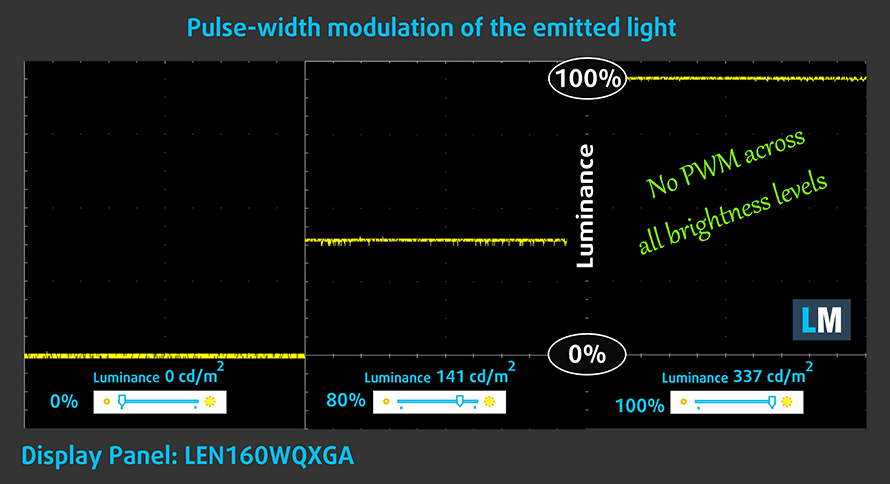
Blue light emissions
Installing our Health-Guard profile not only eliminates PWM but also reduces the harmful Blue Light emissions while keeping the colors of the screen perceptually accurate. If you’re not familiar with the Blue light, the TL;DR version is – emissions that negatively affect your eyes, skin, and your whole body. You can find more information about that in our dedicated article on Blue Light.
Gloss level measurement
Glossy-coated displays are sometimes inconvenient in high ambient light conditions. We show the level of reflection on the screen for the respective laptop when the display is turned off and the measurement angle is 60° (in this case, the result is 50.2 GU).
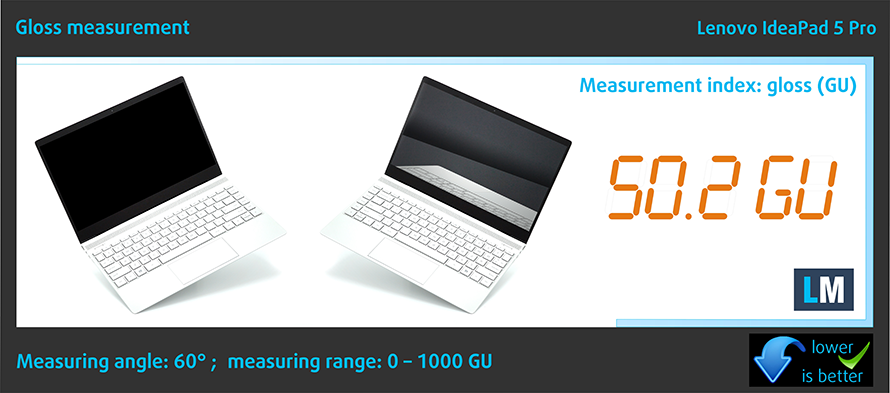
Buy our profiles
Since our profiles are tailored for each individual display model, this article and its respective profile package are meant for Lenovo IdeaPad 5 Pro (16″, 2022) configurations with 16.0″ LEN160WQXGA (LEN9151) (WQXGA 2560 x 1600) IPS.
*Should you have problems with downloading the purchased file, try using a different browser to open the link you’ll receive via e-mail. If the download target is a .php file instead of an archive, change the file extension to .zip or contact us at [email protected].
Read more about the profiles HERE.
In addition to receiving efficient and health-friendly profiles, by buying LaptopMedia's products you also support the development of our labs, where we test devices in order to produce the most objective reviews possible.

Office Work
Office Work should be used mostly by users who spend most of the time looking at pieces of text, tables or just surfing. This profile aims to deliver better distinctness and clarity by keeping a flat gamma curve (2.20), native color temperature and perceptually accurate colors.

Design and Gaming
This profile is aimed at designers who work with colors professionally, and for games and movies as well. Design and Gaming takes display panels to their limits, making them as accurate as possible in the sRGB IEC61966-2-1 standard for Web and HDTV, at white point D65.

Health-Guard
Health-Guard eliminates the harmful Pulse-Width Modulation (PWM) and reduces the negative Blue Light which affects our eyes and body. Since it’s custom tailored for every panel, it manages to keep the colors perceptually accurate. Health-Guard simulates paper so the pressure on the eyes is greatly reduced.
Get all 3 profiles with 33% discount
Sound
Lenovo IdeaPad 5 Pro (16″, 2022)’s Dolby Atmos speakers produce a sound of okay quality. Its low, mid, and high tones are clear of deviations.
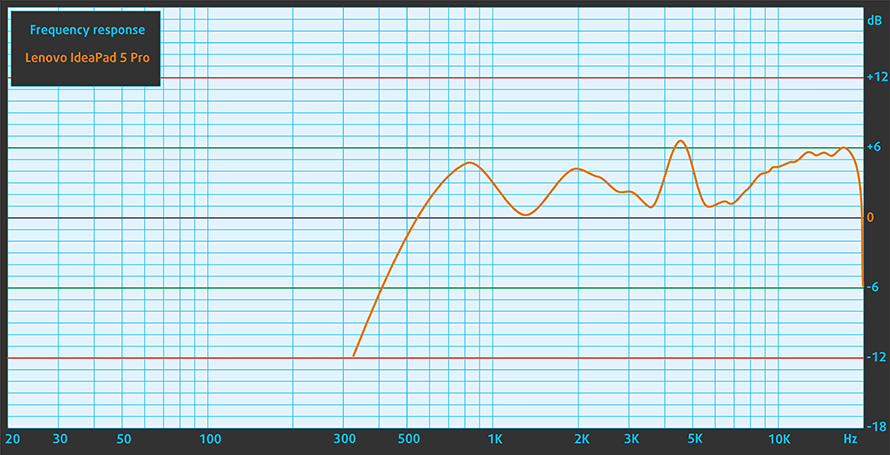
Drivers
All drivers and utilities for this notebook can be found here: https://pcsupport.lenovo.com/us/en/products/laptops-and-netbooks/5-series/ideapad-5-pro-16arh7/downloads/driver-list
Battery
Now, we conduct the battery tests with the Windows Better performance setting turned on, screen brightness adjusted to 120 nits, and all other programs turned off except for the one we are testing the notebook with. This device comes with a 75Wh battery pack. It lasts for 10 hours and 44 minutes of Web browsing, or 10 hours and 10 minutes of video playback.
In order to simulate real-life conditions, we used our own script for automatic web browsing through over 70 websites.

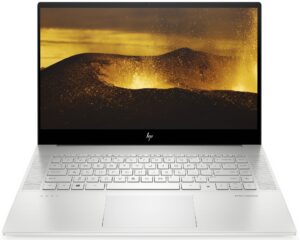

For every test like this, we use the same video in HD.



CPU options
In terms of processors, you can choose between the Ryzen 5 6600HS, and the Ryzen 7 6800HS.
Results are from the Cinebench R23 CPU test (the higher the score, the better)
Results are from our Photoshop benchmark test (the lower the score, the better)
GPU options
As for the graphics, the integrated solutions are joined by the GTX 1650, RTX 3050 (65W), and the RTX 3050 Ti (65W), all of which come with 4GB of GDDR6 VRAM.
Results are from the 3DMark: Time Spy (Graphics) benchmark (higher the score, the better)
Results are from the 3DMark: Fire Strike (Graphics) benchmark (higher the score, the better)
Results are from the 3DMark: Wild Life benchmark (higher the score, the better)
Results are from the Unigine Superposition benchmark (higher the score, the better)
Gaming tests
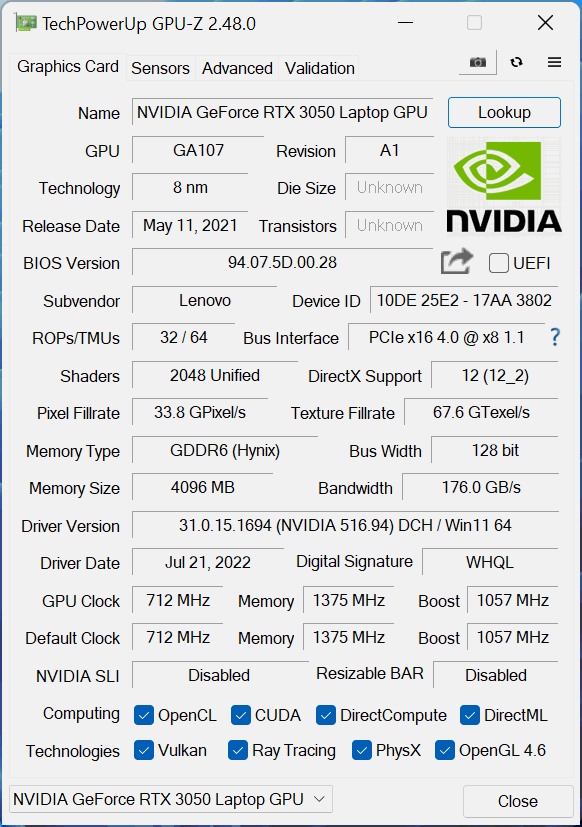
| Metro Exodus | Full HD, Low (Check settings) | Full HD, High (Check settings) | Full HD, Extreme (Check settings) |
|---|---|---|---|
| Average FPS | 91 fps | 41 fps | 19 fps |
| Borderlands 3 | Full HD, Medium (Check settings) | Full HD, High (Check settings) | Full HD, Badass (Check settings) |
|---|---|---|---|
| Average fps | 80 fps | 54 fps | 41 fps |
| Tom Clancy’s Ghost Recon Wildlands | Full HD, Medium (Check settings) | Full HD, High (Check settings) | Full HD, Very High (Check settings) |
|---|---|---|---|
| Average fps | 77 fps | 70 fps | 60 fps |
[eBook Guide + Tools] How to MAX OUT your Lenovo IdeaPad 5 Pro (16″, 2022)
Your Lenovo IdeaPad 5 Pro (16″, 2022) can be Faster. LaptopMedia has tested thousands of models in the last 15 years, and we’re yet to see a notebook that couldn’t be made more powerful through modifications. And have you seen the most popular search on Google related to “how to make my …”? No? OK, here it is:

As you see, having a faster laptop is more important than having more hair.
Well, the main issue here is that there are thousands of advices on the Web. Some work, some don’t. Some are easy, some are complicated. Some are safe, and some are risky. If only there could be an Easy-to-Follow, Step-by-Step, and Laboratory-Tested guide by a proven organization, right?
That’s what we’ve done. We have hundreds of laptops scattered in our office, and we’ve spent a whole year testing different optimizations. We’ve chosen the ones that really make a difference, that are easy to implement without expert skills, and that are safe for your laptop in the long term.

🚀 What’s the performance boost I could expect?
There’s no general answer but we’ve reached more than 30% GPU Performance boost on some models, while typically it’s between 10% and 20%. You could always go beyond but we want to be sure that our advice will keep your laptop on the safe side in the long term. But you want to get the absolute maximum? We’ll show you how, and then it’s up to you.
We even set several World Records on 3DMark, one being our first Max Out for a specific laptop model – MSI Katana B13V.
We’d be happy to compete with YOU on the 3DMark rank lists, and see what YOUR laptop can do using our guide!
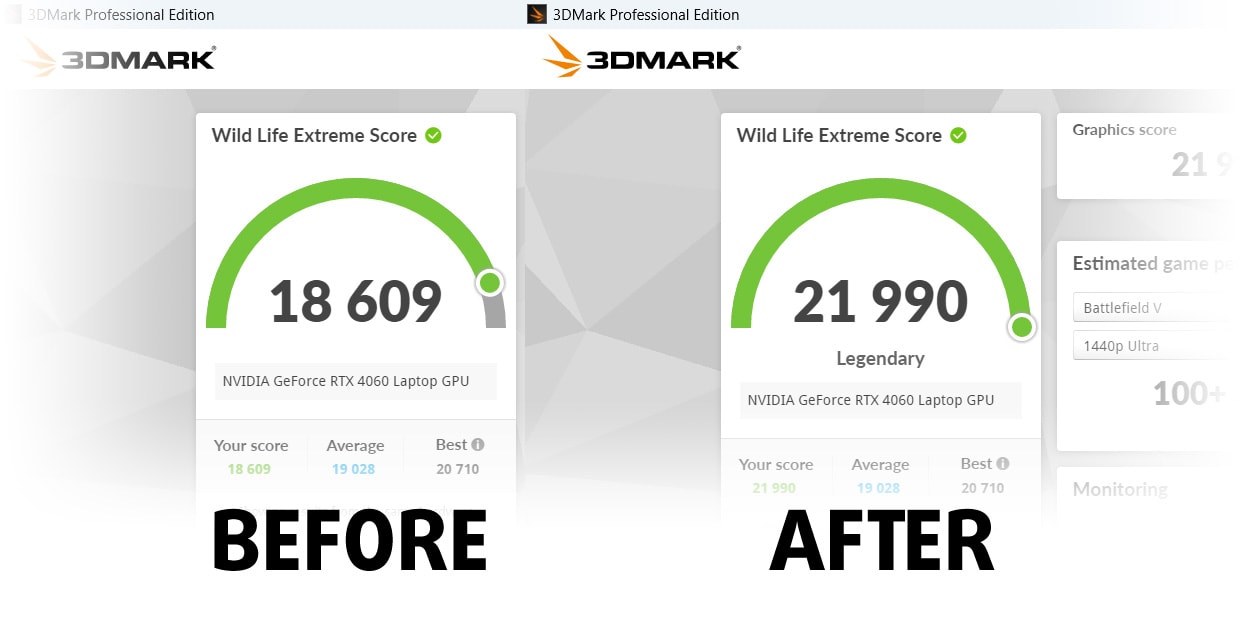
📦 What’s included?
📖 Our eBook includes All the tools you need, along with an Easy-to-follow guide for hassle-free:
⚡ GPU Performance boost by vBIOS replacement, Overclocking, and Undervolting
⚙️ Checking the hardware components and finding if you could get a significant boost by upgrading some of them
💾 Installing a clean Windows OS, with all the base settings you need
📋 Software optimization steps that really give a performance boost
⏩ Building a RAID Storage configuration for doubling sequential read/write speeds or protecting your data
🎯 Display Profiles bundle for a panel of your choice, enhancing the display for accurate colors, better experience, and protection of your eyes
🎁 To receive the Display Profiles bundle as a gift, simply email us your panel model through our “Contact Us” form.
💵 What is the price?
R&D on laptops isn’t easy nor cheap, especially when you’re not using cherry-picked review samples but real units instead. Our idea is to reinvest the profits from the sales back in our laboratory. However, we also want to make it a killer deal for everyone who is planning or has already spent on a gaming laptop, as this product would significantly boost the performance per dollar they get.

🛠️ GPU Modifications: vBIOS, Overclocking, Undervolting
⚙️ Building Fast/Reliable RAID configuration
💻 Hardware upgrade tips for best results
🖼 Display enhancing
💾 OS Optimization for best performance
✖ But if these optimizations are easy, why don’t manufacturers do them?
There are a lot of reasons for the manufacturers to put boundaries on your machine, locking part of its performance:
📊 Market Segmentation: To create different product tiers, manufacturers often limit performance. This allows them to target various market segments and price points, encouraging consumers to pay more for higher-performing models.
❓Unknown Potential: Each unit’s performance varies. Checking each one individually isn’t feasible.
🏢 Regulatory Compliance: Certain regions have regulations regarding energy consumption, and manufacturers often place some boundaries to fit all standards.
🏭 Supply Chain Constraints: Limitations are imposed due to the current availability of components.
🫰 Cost-effective solutions: Often, less popular but important details are overlooked. For example, better RAM types can boost performance by up to 30%, but many users ignore this, and many online stores don’t even provide that info.
🔒 Security concerns: Many protections impact performance while being negligible for regular users. However, manufacturers don’t know if their laptops will be purchased by individuals or large corporations, so they can’t disable these features by default.
Not a bad performance bump in terms of Storage Speeds:
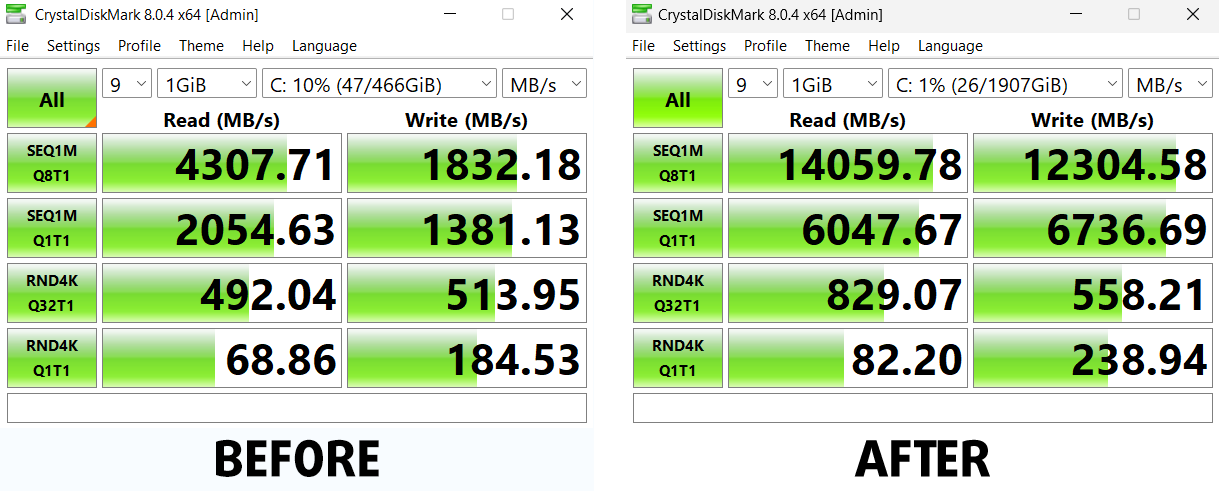
What are the default apps that impact performance the most?
What to do when RAID drives don’t show up?
How to optimize Windows further for maximum FPS gain in games?

Temperatures and comfort
Max CPU load
In this test we use 100% on the CPU cores, monitoring their frequencies and chip temperature. The first column shows a computer’s reaction to a short load (2-10 seconds), the second column simulates a serious task (between 15 and 30 seconds), and the third column is a good indicator of how good the laptop is for long loads such as video rendering.
Average core frequency (base frequency + X); CPU temp.
| AMD Ryzen 5 6600HS (45W TDP) | 0:02 – 0:10 sec | 0:15 – 0:30 sec | 10:00 – 15:00 min |
|---|---|---|---|
| Lenovo IdeaPad 5 Pro (16″, 2022) | 3.86 GHz @ 79°C @ 61W | 3.72 GHz @ 81°C @ 54W | 3.71 GHz @ 84°C @ 54W |
It is really interesting that even though this CPU has a 35W TDP, the laptop still manages to sustain it at 54W for long periods of time. Furthermore, the temperature is significantly lower than that of the IdeaPad Gaming 3 (15″, 2022), which was spot on at 100°C at roughly the same clock speed.
Real-life gaming
| NVIDIA GeForce RTX 3050 | GPU frequency/ Core temp (after 2 min) | GPU frequency/ Core temp (after 30 min) | GPU frequency/ Core temp (Max Fan) |
|---|---|---|---|
| Lenovo IdeaPad 5 Pro (16″, 2022) | 1702 MHz @ 71°C @ 61W | 1695 MHz @ 73°C @ 62W | – |
| Lenovo IdeaPad Gaming 3 (15″, 2022) | 2002 MHz @ 70°C @ 84W | 1985 MHz @ 72°C @ 85W | – |
| Lenovo IdeaPad Gaming 3i (15″, 2022) | 1910 MHz @ 73°C @ 82W | 1912 MHz @ 71°C @ 82W | – |
| Acer Nitro 5 (AN515-58) | 2021 MHz @ 70°C @ 94W | 2009 MHz @ 73°C @ 94W | – |
| Lenovo IdeaPad Gaming 3 (15″, 2021) | 1885 MHz @ 76°C @ 85W | 1866 MHz @ 82°C @ 85W | – |
| Lenovo IdeaPad Gaming 3i (15″, 2021) | 2004 MHz @ 82°C @ 88W | 1991 MHz @ 86°C @ 88W | – |
| ASUS Vivobook Pro 15 OLED (K3500) | 1605 MHz @ 69°C @ 49W | 1610 MHz @ 68°C @ 50W | – |
| Dell Vostro 15 7510 | 1729 MHz @ 74°C @ 64W | 1710 MHz @ 78°C @ 65W | – |
| ASUS VivoBook Pro 16X OLED (N7600) | 1576 MHz @ 68°C @ 50W | 1571 MHz @ 69°C @ 50W | – |
| Lenovo IdeaPad 5 Pro (16″) | 1651 MHz @ 72°C @ 55W | 1636 MHz @ 75°C @ 55W | – |
| HP Victus 16 (16-e0000) | 1824 MHz @ 73°C @ 75W | 1814 MHz @ 73°C @ 75W | 1822 MHz @ 73°C @ 75W |
| MSI Katana GF66 | 1675 MHz @ 73°C @ 60W | 1660 MHz @ 78°C @ 60W | 1699 MHz @ 67°C @ 60W |
Expectedly or not, the laptop didn’t really mind when we played games for more than 30 minutes without a rest (my back felt more strain than this device’s cooling solution).
Gaming comfort
A well-calculated package means that your eardrums won’t be punished by the fans of your laptop, even when you stress it out a lot. You should also be glad that the highest temperature on the keyboard is pretty reasonable.
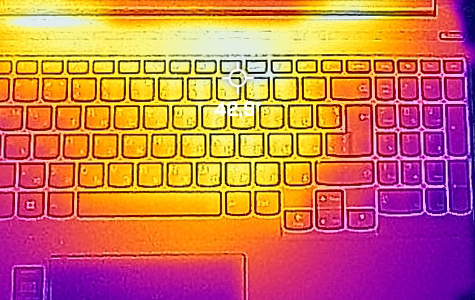
Verdict
 Are you a creator that plays games? Or you are a gamer that creates the content? Or are you rather a person that wants a stylish notebook, which is both usable for occasional gaming, and provides you with a smooth day-to-day operation? Well, that’s great because it means you are probably in the right place.
Are you a creator that plays games? Or you are a gamer that creates the content? Or are you rather a person that wants a stylish notebook, which is both usable for occasional gaming, and provides you with a smooth day-to-day operation? Well, that’s great because it means you are probably in the right place.
While the processor options here are definitely slower than their Intel counterparts, you have to keep in mind that they can still provide plenty of power. As we can tell from the battery life figures, the HS processors are efficient as well. We are talking about nearly 11 hours of Web browsing or more than 10 hours of video playback on a single charge.
The display is no slouch either. Lenovo IdeaPad 5i Pro (16″, 2022)’s IPS panel has a high resolution (2560×1600), comfortable viewing angles, and a very good contrast ratio. It covers 90% of the sRGB color gamut and produces accurate colors with the help of our Gaming and Web design profile. Furthermore, the panel doesn’t use PWM for brightness adjustment. This, together with the 16:10 aspect ratio and the accurate color representation means that you will get a quite comfortable device for professional work.
Do you need more reasons to assure you of the qualities of this notebook? How about some reasons not to get it? Well, unfortunately, you won’t be able to upgrade the memory of your IdeaPad 5 Pro. Not only is it soldered to the motherboard, but the maximum amount is limited to 16GB, which is often not enough for programs such as Adobe Premiere or … Chrome.
On the bright side, the LPDDR5 RAM runs at 6400MHz and in quad-channel mode, which significantly increases the bandwidth. And for storage, there is one M.2 PCIe x4 slot, which does support Gen 4 SSDs.
Furthermore, you get a decent I/O, which includes an SD card reader and a USB Type-C 3.2 (Gen. 2) port. While the latter doesn’t have a Thunderbolt 4 certification and is slightly slower than the brand new USB4 format, you should be happy, because it still outputs DisplayPort signal, and supports Power Delivery.
Unfortunately, the only reason we have doubts about the usefulness of the IdeaPad 5 Pro (16″, 2022) for real creator work is the limited memory. If it wasn’t for that, and we are surprised ourselves, we would have gladly recommended the laptop.
You can check the prices and configurations in our Specs System: https://laptopmedia.com/series/lenovo-ideapad-5-pro-16-2022/
Pros
- Thin and light outfit
- Strong aluminum chassis
- Covers 90% of the sRGB color gamut and has accurate color representation with our Gaming and Web design profile
- High resolution and 16:10 aspect ratio
- Wide I/O + SD card slot
- Reasonable performance for its class
- IR face recognition
- Good battery life
Cons
- Soldered memory
- Only 16GB maximum RAM
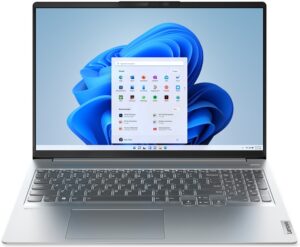


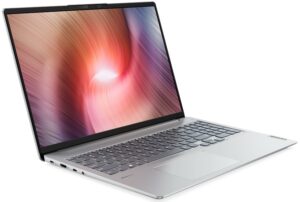
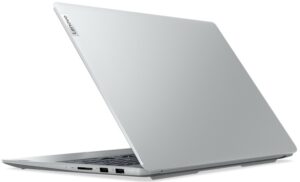
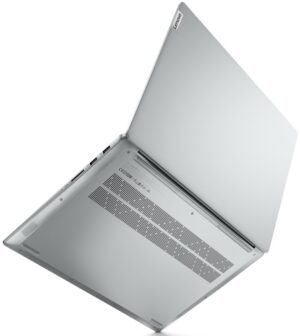
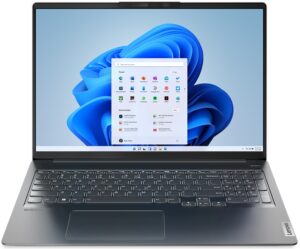
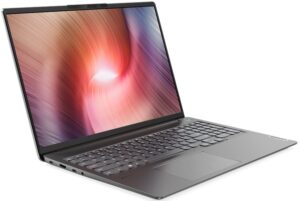
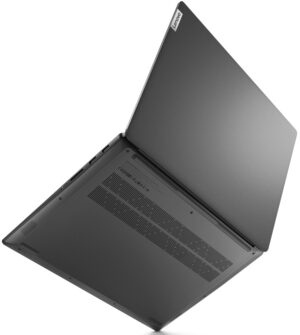

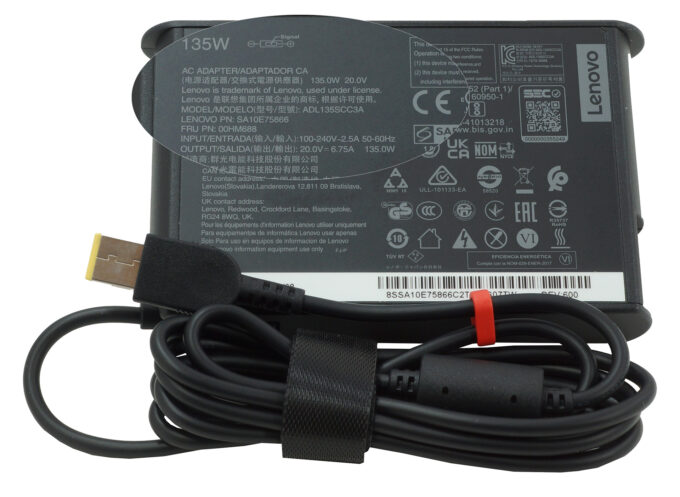
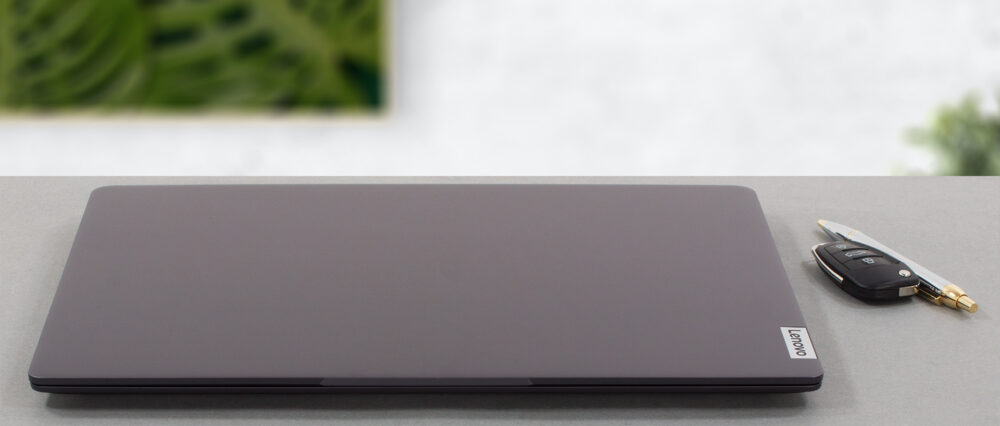
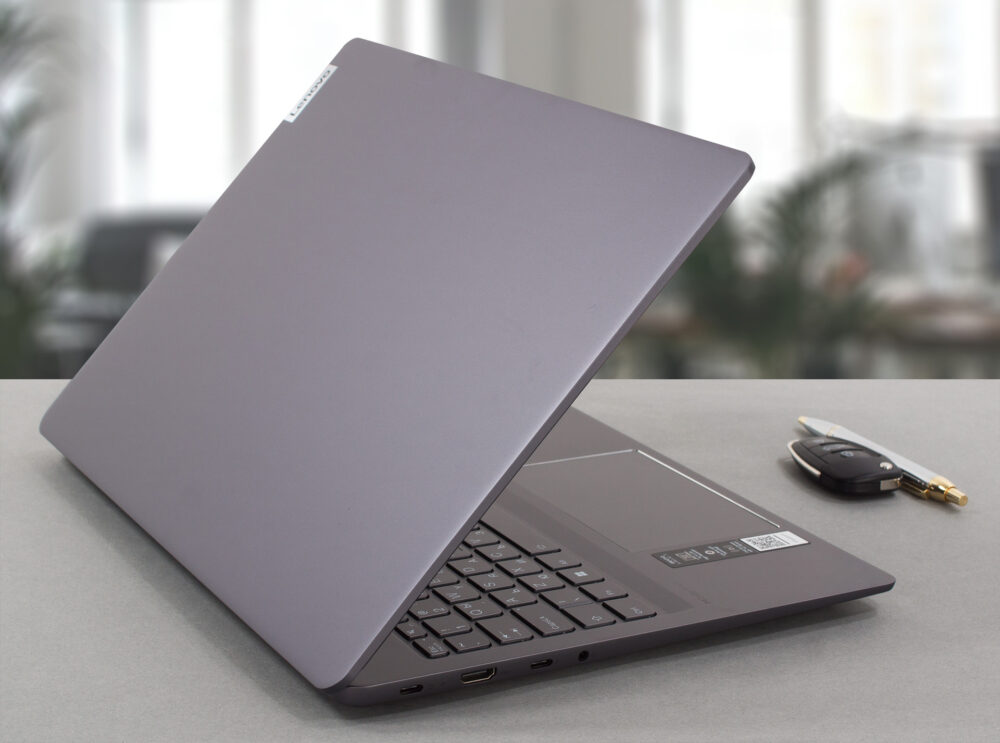

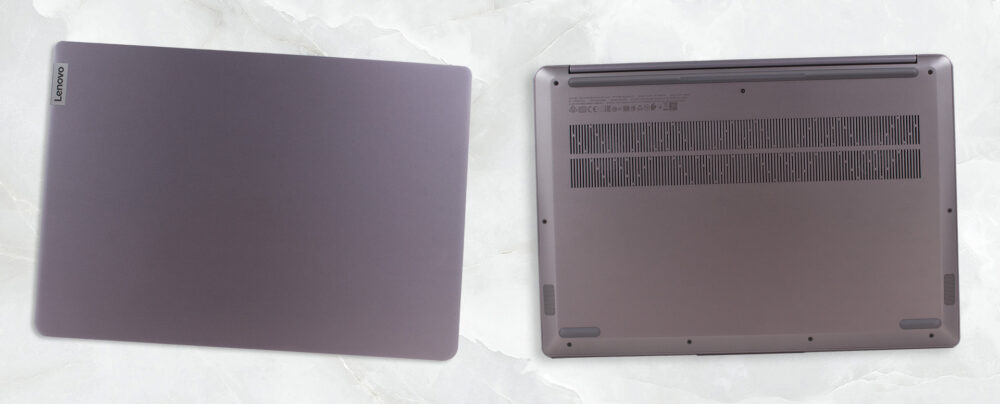
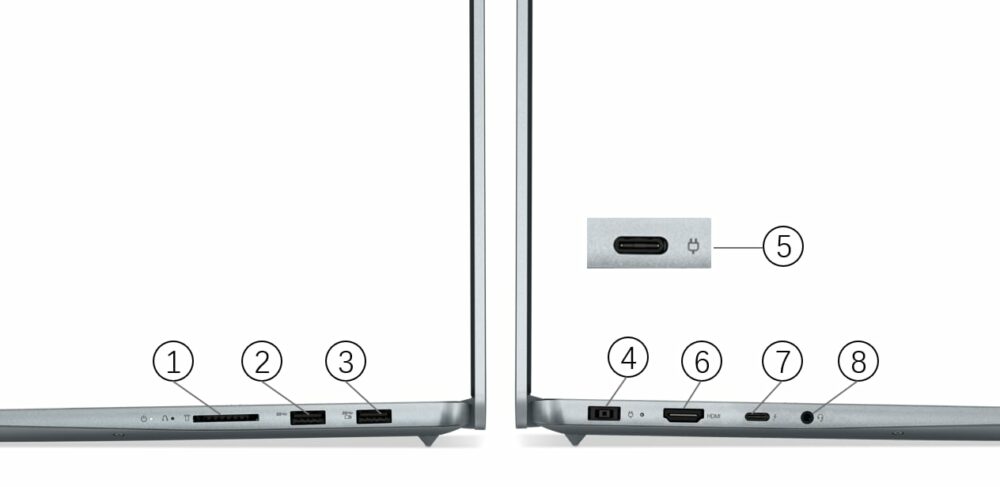
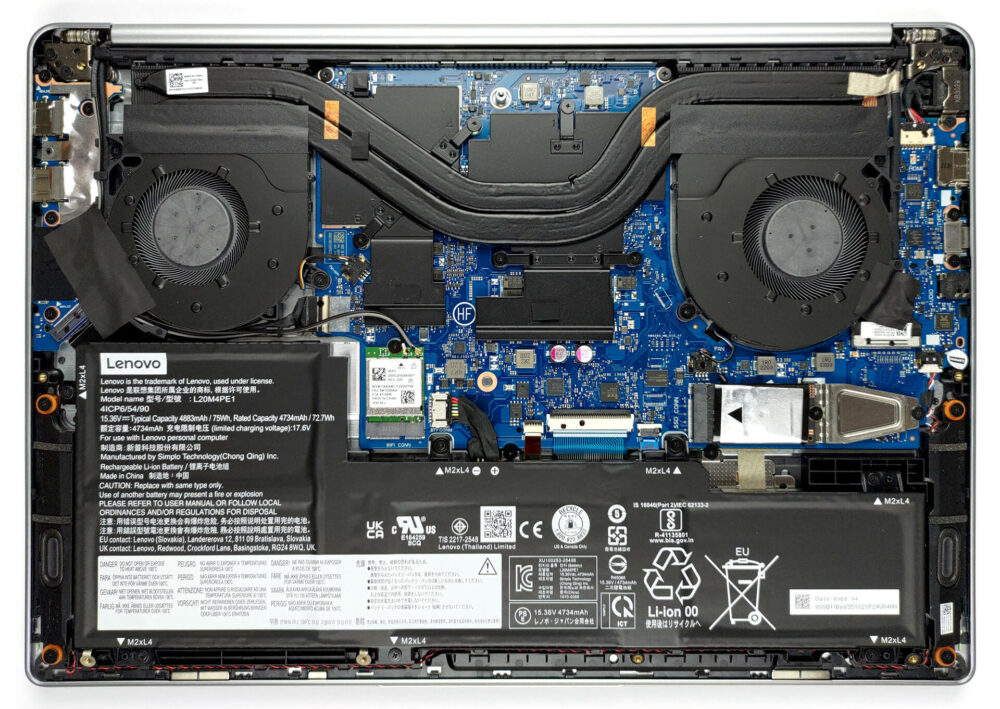
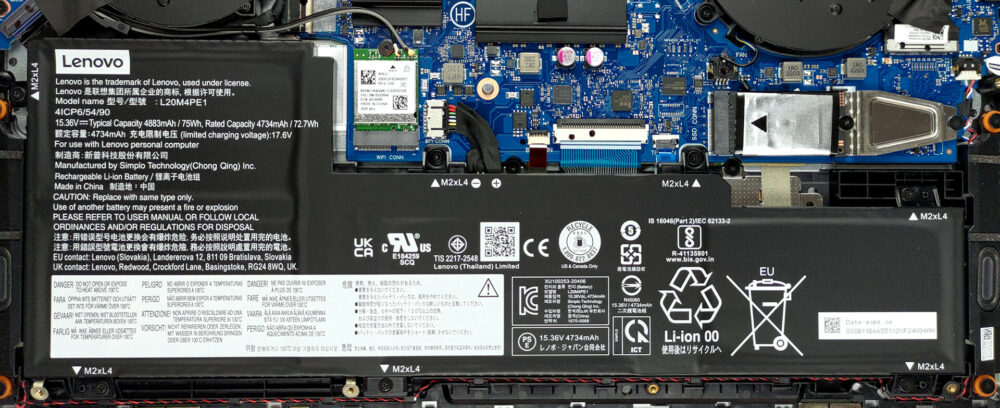
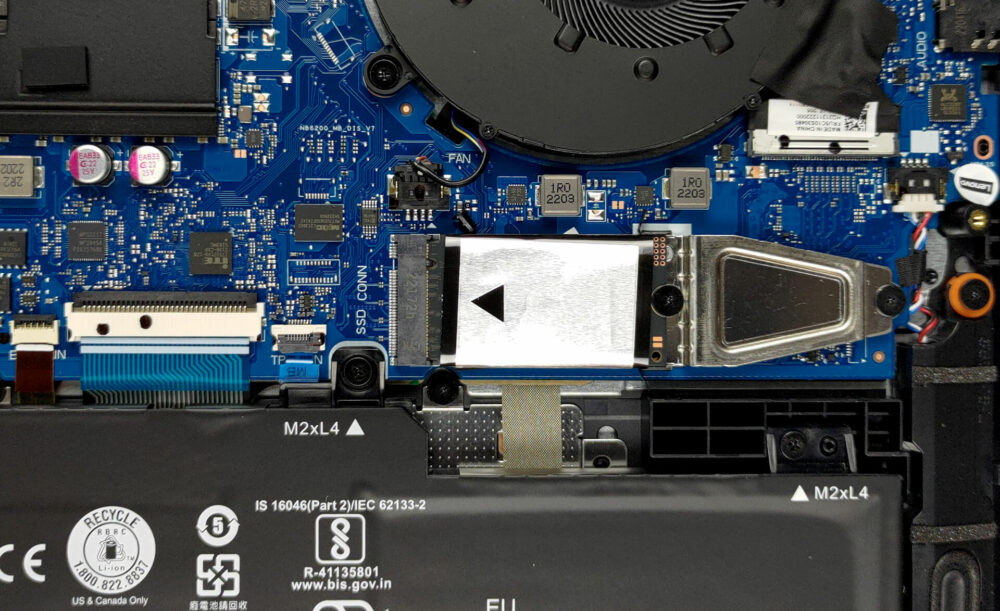
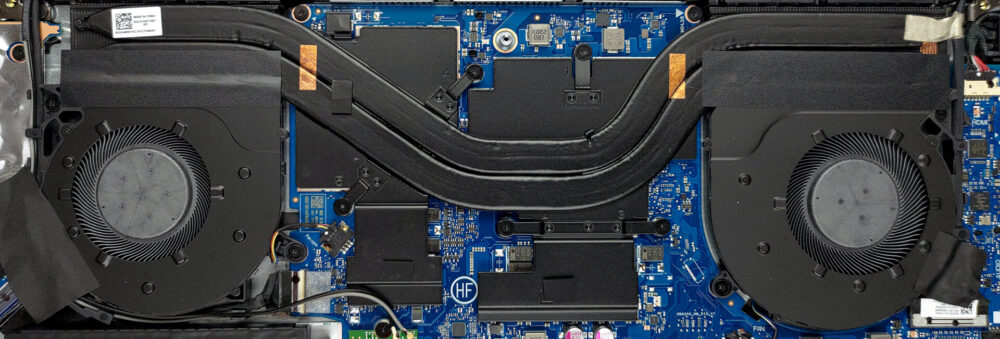
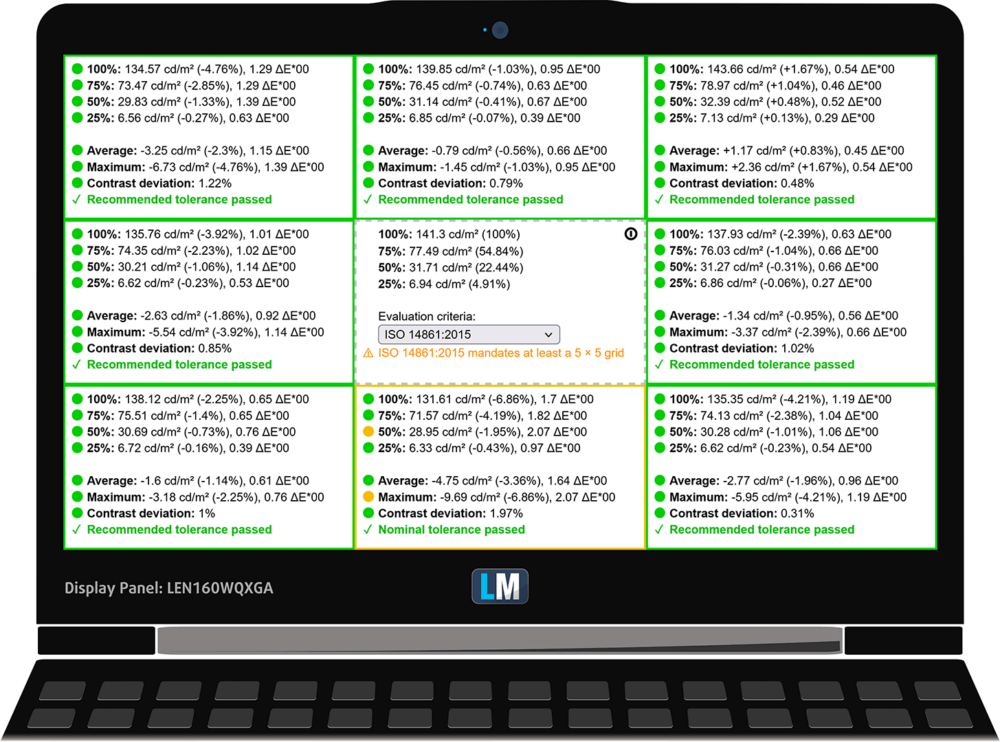
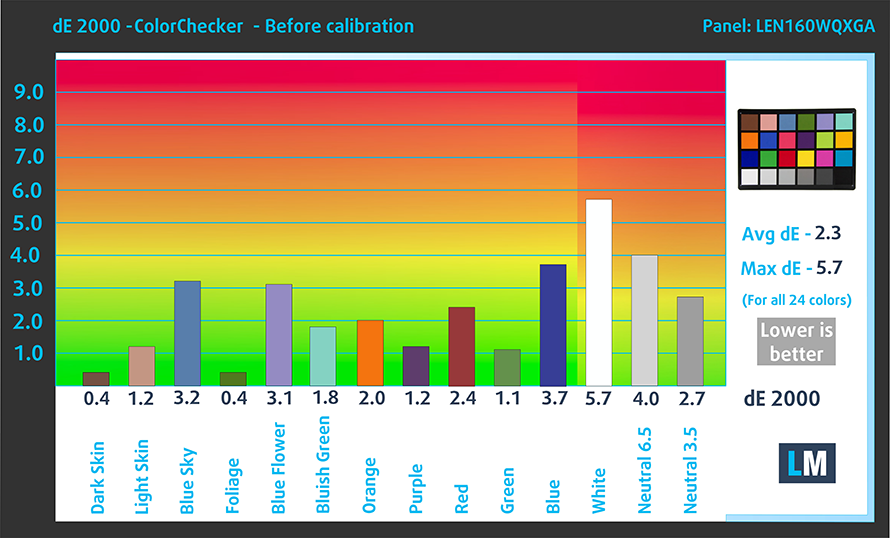
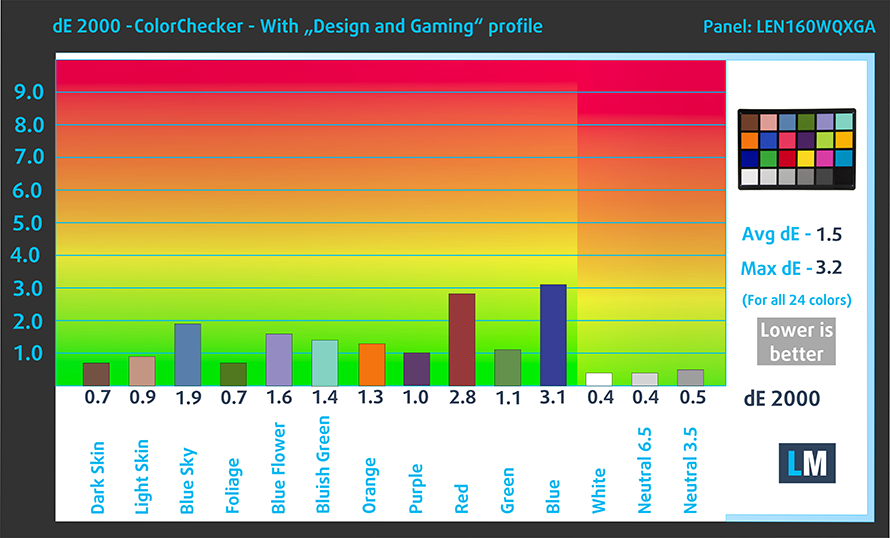













Last year IdeaPad 5 Pro had terrible touchpad, barely usable. Maybe Lenovo fixed it this year.
Hi. Nice review. I bought this laptop two weeks ago and despite the premium feel and excellent specs, I’m already regretting it. The fans just constantly run at a low rate even when the CPU temp is only 36 degrees C. That’s ridiculous. Plus, no utility I’ve tried has even been able to READ or monitor the fan speeds, and there are no fan option in the BIOS. That’s also ridiculous, especially for a model with “Pro” in the name. Still looking for a solution…
look up fancontrol on github. u can control fan speeds better than any other application
It isn’t made all of aluminium. Bottom chasis is plastic. It cannot be opened with one hand.